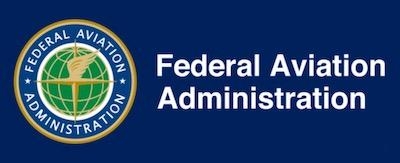Clarifies Recommendations For Fuel Providers, Aircraft Operators
The FAA has revised its Special Airworthiness Information Bulletin (SAIB) to clarify the recommendation regarding the dispositioning of jet fuel contaminated with Diesel Exhaust Fluid (DEF). The SAIB is directed towards airplane operators, fixed base operators (FBOs), FAA repair stations, Flight Standard District Offices (FSDOs), and foreign civil aviation authorities of certain airplanes that uplifted jet fuel contaminated with DEF, or uplifted jet fuel using refueling equipment that was exposed to DEF. This SAIB also requests feedback regarding any service difficulties or operational anomalies of the identified airplanes and recommends that the owners of those airplanes consult with the original equipment manufacturers (OEMs) of their airplane, engine, and auxiliary power unit (APU) to determine the appropriate inspection and corrective maintenance actions on their airplane.

During the period between November 18 and November 21, 2017, seven airplanes with civilian registry identified in the SAIB document linked blow were serviced with jet fuel containing DEF at Eppley Airfield Airport, Omaha, Nebraska (KOMA). During the same time period, an additional six airplanes were serviced using refueling equipment that had been exposed to DEF.
The DEF was inadvertently used instead of fuel system icing inhibitor (FSII) on two refueling trucks at KOMA and injected into the fuel with each truck’s FSII injection system. Only those airplanes identified in Appendix 1 received the contaminated fuel, and only those airplanes identified in Appendix 2 were serviced with refueling equipment that had been exposed to DEF.
DEF is a urea-based chemical that is not approved for use in jet fuel. When mixed with jet fuel, DEF will react with certain jet fuel chemical components to form crystalline deposits in the fuel system. These deposits will flow through the aircraft fuel system and may accumulate on filters, fuel metering components, other fuel system components, or engine fuel nozzles. The deposits may also settle in the fuel tanks or other areas of the aircraft fuel system where they may potentially become dislodged over time and accumulate downstream in the fuel system as described above.
Airplanes identified in Appendix 1 of the SAIB have experienced clogged fuel filters and fuel nozzle deposits that led to service difficulties and unplanned diversions. Airplanes identified in Appendix 2 of the SAIB were exposed to trace amounts of DEF from residual fuel remaining in the refueling hoses and equipment. The FAA has not received any service difficulty reports from these aircraft.
The crystalline deposits are not soluble in fuel, so they cannot be removed by flushing the airplane fuel system with jet fuel. The deposits are soluble in methanol and other polar solvents, but use of these chemicals may have adverse consequences on airplanes and engine fuel system materials. Consequently, OEMs should be contacted to develop inspection techniques and corrective maintenance actions appropriate for each specific aircraft model type and its level of exposure.
Jet fuel that has been contaminated with DEF no longer meets the aviation fuel operating limitations of airplanes certificated to operate on Jet A fuel, and therefore, cannot be used on those airplanes. Jet fuel that has been removed from airplanes listed in Appendix 1 or Appendix 2 should be downgraded to other non–aviation fuel grades and not used on airplanes in the future. The FAA is monitoring the situation to determine if additional action is required. The FAA is requesting that any service difficulties and maintenance and inspection findings on the aircraft identified in Appendix 1 or Appendix 2 be reported to us in support of this effort.
The FAA recommends the following:
Owners or operators of airplanes identified in Appendices 1 and 2 contact their airplane, engine, and APU OEMs to determine the appropriate inspection techniques and corrective maintenance actions to remove urea-based crystalline deposits from the fuel system. This may include the removal and replacement of fuel system parts or components affected by exposure to these deposits.
Owners or operators of airplanes identified in Appendices 1 and 2 report to the FAA any service difficulties (including fuel filter bypass and clogging incidents), fuel system repairs, and fuel system inspection results related to the presence of these urea-based crystalline deposits. 3. Jet fuel suspected of being contaminated with DEF that has been removed from the airplanes listed in Appendices 1 and 2 should be discarded and not be used on airplanes or other vehicles.
(Source: FAA)
 SpaceX to Launch Inversion RAY Reentry Vehicle in Fall
SpaceX to Launch Inversion RAY Reentry Vehicle in Fall Aero-News: Quote of the Day (04.23.24)
Aero-News: Quote of the Day (04.23.24) Aero-News: Quote of the Day (04.20.24)
Aero-News: Quote of the Day (04.20.24) ANN's Daily Aero-Linx (04.20.24)
ANN's Daily Aero-Linx (04.20.24) Aero-News: Quote of the Day (04.21.24)
Aero-News: Quote of the Day (04.21.24)



